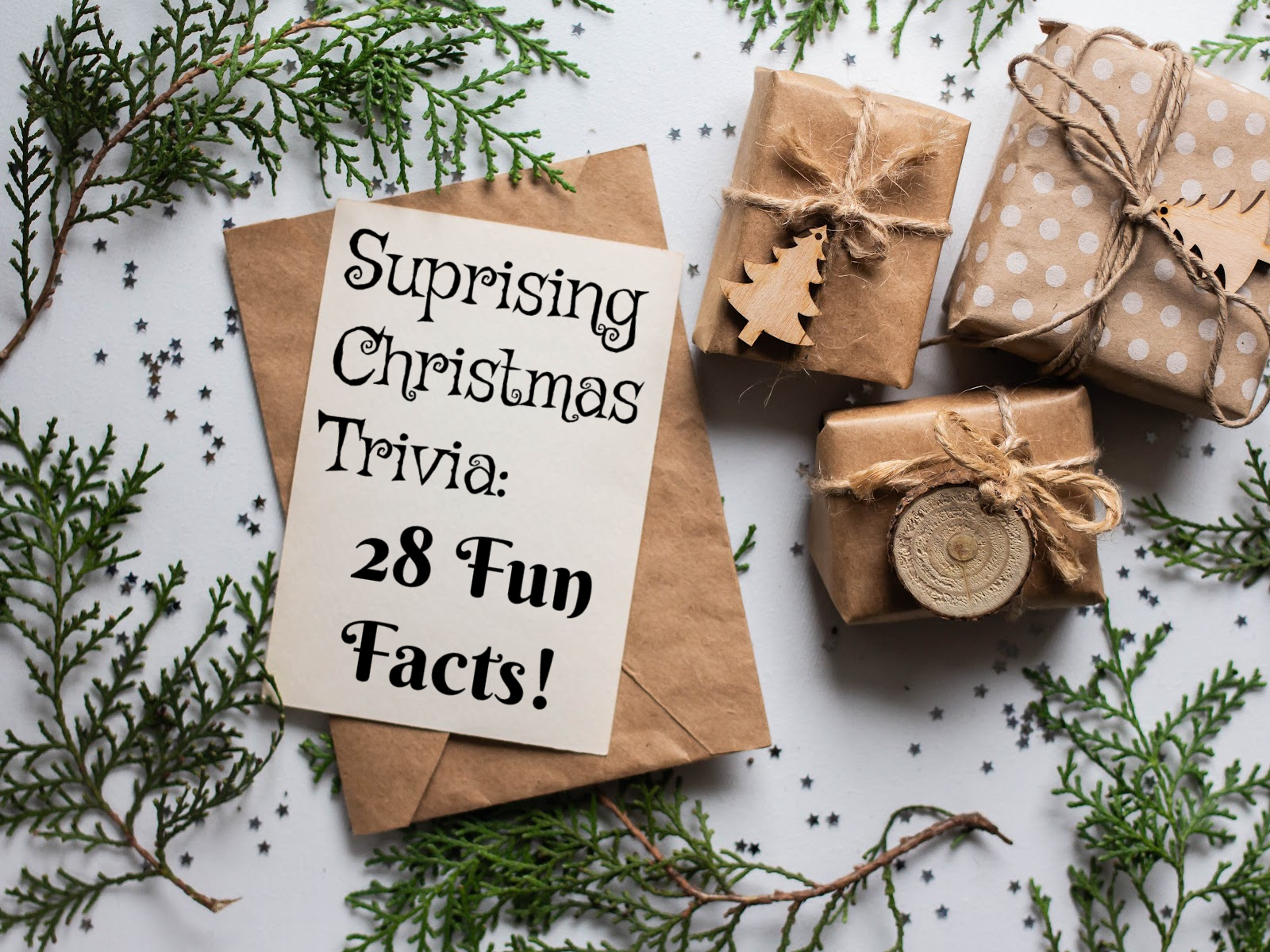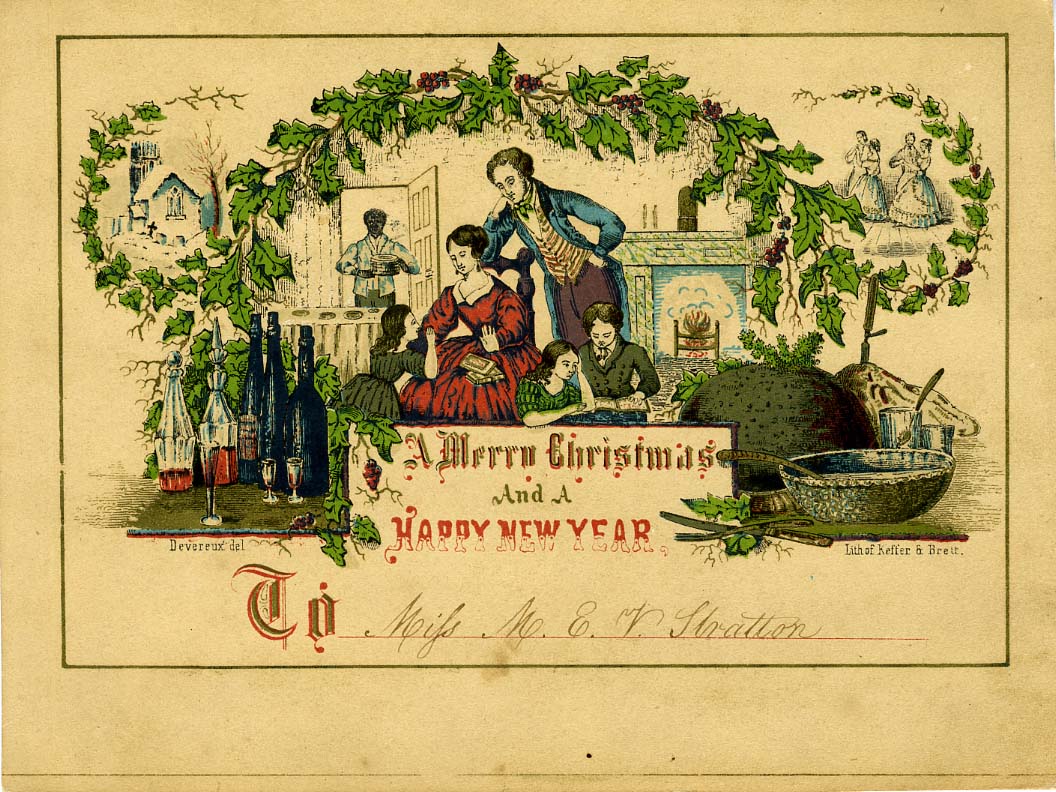Question: What happens when you combine my favorite time of year with my thirst for random knowledge?
Answer: A list of 28 totally random but fascinating holiday trivia! I had so much fun compiling this list of surprising facts and hope you enjoy reading them; you’re sure to be in for a surprise or two!

1. Scholars agree that Jesus was born between 6 BC and 4 BC. Nobody knows the actual date of Jesus’ birth, though it almost certainly was not in December (some scholars speculate he was born in the spring, others believe his birthday was in September). The earliest evidence for the observance of December 25 as the birthday of Christ appears in the Philocalian Calendar, composed at Rome in 336.
2. Contrary to Christmas pageants, beloved carols, and children’s picture books, the Bible does not specify: that Mary rode a donkey; that Mary and Joseph were turned away by an innkeeper (only that there was no room for them in the inn); that Mary gave birth to Jesus the day she arrived in Bethlehem (only that it happened “while they were there”); that Jesus was born in a stable (it was more likely a cave built into the hillside); that there were three wise men (no number is specified); or that the Magi arrived the day/night of Jesus’ birth.
3. The word Christmas was first recorded in 1038 and originates from the phrase “Cristes Maesse,” which means the Mass of Christ, or Christ’s Mass. And the term Xmas was not a secular effort to remove Christ from Christmas: the name dates back to the mid-1500s and gets its roots from the Greek letter X, or Chi, which is the first letter in the Greek word for Christ.
4. The word Merry in Merry Christmas was not always considered acceptable because being merry signified intoxication.
5. Christmas cards were originally penned in England by boys who were practicing their writing skills and would present these handmade cards to their parents.
6. Sir Henry Cole commissioned the first commercially available Christmas card in London in 1843. The card (pictured below) was controversial at the time because it pictured a company of people holding glasses of wine—an offensive choice for a card celebrating a holy holiday.

7. Over 2 billion Christmas cards are sent in the US each year (our family is responsible for about 120 of those).
8. The first Christmas postage stamp was issued in 1962 and featured candles and a wreath in red and green.
9. The world carol was used in medieval times to refer to a dance carried out in circles, usually performed during pagan celebrations. The folk music of these first carols was later adapted to Christian themes by Franciscan friars. For a time carols could be attached to any season, but eventually most of the carols sung outside of Christmas died out.
10. The oldest carol that’s still popular in its original form (both tune and words) is “O Come All Ye Faithful,” which was written by the end of the 18th century.
11. Bing Crosby’s classic song “White Christmas” is the best-selling Christmas song, AND the best-selling single of all time.
12. “Silent Night” is the most-recorded Christmas song in history, with more than 733 different versions copyrighted since 1978.
13. “Jingle Bells” was penned in 1857 by a Northerner who proudly fought for the Confederacy. The song, originally titled “One Horse Open Sleigh,” was intended as a Thanksgiving song and may have first been performed in blackface.
14. Rudolph the Red-Nosed Reindeer began as a marketing campaign in 1939, when the Montgomery Ward department store commissioned one of its copywriters to create a Christmas story that could be distributed as a promotion; more than 2 million copies were distributed. Gene Autry recorded the popular song in 1949, and the movie was made in 1964.

15. The tradition of Christmas trees goes back to ancient Egyptians and Romans, who celebrated the Winter solstice by decorating their homes with green palm fronds and evergreen boughs. The first Christmas trees were brought indoors by 16th-century German Christians, but the tradition of Christmas trees did not catch on in U.S. homes until the 1890s, due to Puritanical American preachers who opposed the “pagan” symbol.
16. Martin Luther is credited with placing the first burning candles in a Christmas tree to mimic the sparkling stars.
17. The custom of making wreaths with pruned evergreen branches was also introduced by 16th-century Germans; after limbs were cut from the tree to make it more uniform in shape, the cast-off boughs were woven into wreaths whose circular shape and evergreen material were thought to represent eternal life.
18. Poinsettias, which grow wild in Mexico in the winter, are called “flor de nochebuena” or “Christmas Eve flower” in their native country. The flower’s English name comes from Joel R. Poinsett, the first U.S. minister to Mexico, who brought back the plants from a visit in 1828. New York stores began selling poinsettias at Christmas in 1870, and by 1900 they were a universal symbol of the holiday.
19. Ancient cultures considered mistletoe an aphrodisiac, which is probably why kissing under the mistletoe is thought to bring you luck in your love life. According to Norse mythology, the goddess of love promised to kiss anyone who passed under the berry-laden plant after it saved her son’s life. It wasn’t until the 18th century that the Christmas custom picked up steam in England.
20. The legendary figure of Santa Claus can be traced back to St. Nicholas, a Turkish-born monk from the Third Century who gained fame wandering the countryside helping the poor and sick. In Holland, St. Nicholas is known as Sinter Klaas, and Dutch immigrants to New York brought Sinter Klaas to America in the late 1700s. The enduring details of Santa’s story were popularized by the 1822 poem “An Account of a Visit from St. Nicholas” (better known as “The Night Before Christmas”).
21. According to legend, the Christmas stocking tradition began with a poor widowed man who didn’t have money for his three daughters’ dowries. St. Nicholas learned of the family’s plight and, wanting to help but knowing the man would refuse direct charity, visited the home one night. St. Nicholas slid down the chimney where he found the girls’ recently laundered stockings drying by the fire. He filled them with coins and disappeared, and because of his generosity, the girls were eligible to wed and their father could rest easy.

22. In 1931, Coca-Cola hired an illustrator named Haddon Sundblom to depict Santa Claus for magazine ads. His illustrations popularized the image of Santa we have today.
23. Though now widely considered one of the greatest (if not THE greatest) Christmas movies of all time, It’s a Wonderful Life was a box office flop when it released in 1946.
24. The 1947 film Miracle on 34th Street was released to theaters in May, despite its holiday themes, because the 20th Century Fox studio head believed more people went to the movies in the summer.
25. The tradition of white elephant gifts began long ago when the King of Siam gave an actual white elephant to anyone he disliked, because elephants were considered holy symbols but were expensive to care for. In the early 1800s the term began to refer to social gatherings where impractical gifts were exchanged.
26. The word eggnog was first used in writing in the late 18th century, but most historians agree that eggnog originated in medieval Britain where it was an upper class luxury (since only the wealthy could afford the ingredients of milk, sherry, and eggs). It likely became associated with the holidays due to a lack of refrigeration at that time. In the American colonies, eggnog became a more common drink thanks to the extensive farming opportunities.
27. The most popular theory of why we leave cookies and milk out for Santa is because Dutch children would leave food and drink out for St. Nicholas on his feast day. In America, the tradition took root during the Great Depression, when parents encouraged children to keep their charitable spirit alive in the face of financial hardship.
28. Legend has it that the candy cane dates back to 1670, when a German choirmaster handed out red-and-white sugar sticks in the shape of a shepherd’s crook among his young singers to keep them quiet during the Living Creche ceremony.

Was I right? Did you learn something new from this list? I hope so, and I hope that you have a new appreciation for some of the best entertainment and traditions this season has to offer.